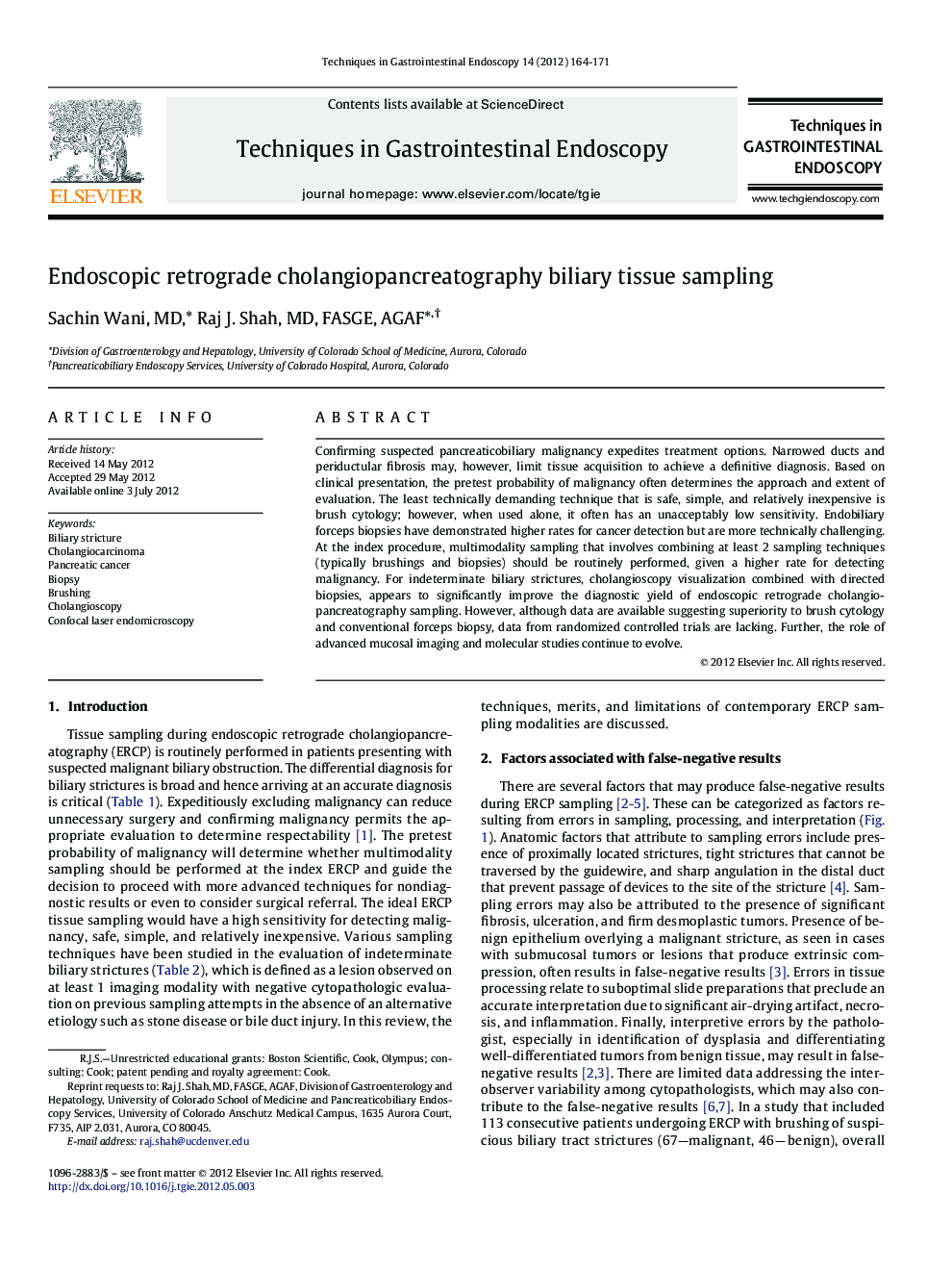| Article ID | Journal | Published Year | Pages | File Type |
|---|---|---|---|---|
| 3322618 | Techniques in Gastrointestinal Endoscopy | 2012 | 8 Pages |
Abstract
Confirming suspected pancreaticobiliary malignancy expedites treatment options. Narrowed ducts and periductular fibrosis may, however, limit tissue acquisition to achieve a definitive diagnosis. Based on clinical presentation, the pretest probability of malignancy often determines the approach and extent of evaluation. The least technically demanding technique that is safe, simple, and relatively inexpensive is brush cytology; however, when used alone, it often has an unacceptably low sensitivity. Endobiliary forceps biopsies have demonstrated higher rates for cancer detection but are more technically challenging. At the index procedure, multimodality sampling that involves combining at least 2 sampling techniques (typically brushings and biopsies) should be routinely performed, given a higher rate for detecting malignancy. For indeterminate biliary strictures, cholangioscopy visualization combined with directed biopsies, appears to significantly improve the diagnostic yield of endoscopic retrograde cholangiopancreatography sampling. However, although data are available suggesting superiority to brush cytology and conventional forceps biopsy, data from randomized controlled trials are lacking. Further, the role of advanced mucosal imaging and molecular studies continue to evolve.
Keywords
Related Topics
Health Sciences
Medicine and Dentistry
Gastroenterology
Authors
Sachin MD, Raj J. MD, FASGE, AGAF,
